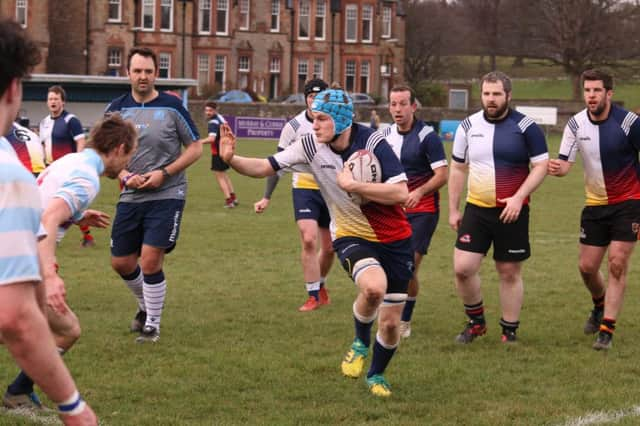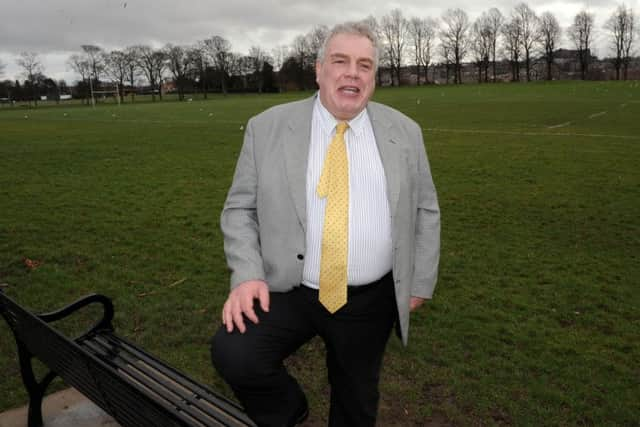‘We simply don’t have enough bad players.’ Scottish Rugby’s participation problem


According to World Rugby’s latest numbers which were last updated in 2016, Scotland has a total of 49,265 registered players and a eye-catching, total of 164,191 players all told which means there are a lot of mini and midi players out there.
But if you were to ask the same question of Iain “the Bear” Milne, former Scotland prop and currently the chief cook and bottle washer at Heriot’s Rugby Club, the answer is 4,000-4,500 adult males.
Advertisement
Hide AdAdvertisement
Hide AdMilne did a back-of-the-envelope calculation. He went on to the Scottish Rugby website and totted up the number of teams that actually played a real match of rugby. He took that number and multiplied it by an approximate squad strength of 20 and arrived at the figure of 4,000-4,500 actual adult male rugby players. (I did the same with the women and arrived at a figure of 750 so we could call the actual adult numbers 5,000 all told).


He admits it’s not hugely scientific. It ignores university teams that don’t play Saturday fixtures, the injured, walking rugby, touch/tag rugby, sevens etc etc but all too often those various forms of “rugby-lite” are used as a fig leaf to cover up the actual numbers playing the 15-a-side game on a regular basis.
Milne’s calculations come at an opportune time because Scottish Rugby is in the process of introducing a new players’ registration scheme to cut out the dead wood and count real players… exactly like Milne.
The scheme is known as Scrums; it gives every individual their own registered number, and the players register themselves rather than the clubs.
In future Murrayfield will know where you are, who you play for and how many times you turned out in any given season. It all seems a bit Big Brotheresque but you can understand why the authorities are doing it and they deserve some credit for grasping a nettle they have long shied away from.
Scottish Rugby should release the real numbers of regular players in the coming weeks and I am willing to bet that they are a lot closer to the Bear’s total than to World Rugby’s dart-in-the-board. What aroused Milne’s suspicions originally was the very many reserve team fixtures, even of leading Premiership clubs, that were cancelled.
In some reserve team leagues, he puts the figure around 50 per cent of all fixtures and he claims to know of one club, he spares their blushes, that topped their division without playing a single game all season by the simple expedient of waiting for the opposition to cede first.
The Bear has been at Heriot’s since he was a cub in one capacity or another, so is the problem of unfulfilled fixtures getting worse?
Advertisement
Hide AdAdvertisement
Hide Ad“Yes,” he growls, “it has got worse. I’d say that the professional game is in good heart, Glasgow and Edinburgh are through to the quarter-finals of the Champions Cup and I’d even say that the top six or seven clubs in Premier One are quite healthy.
“But we have to ask ourselves what is rugby really about because 95 per cent of the game falls below that [elite] level. The game is supposed to be about rugby’s unique spirit, fun, trust in your team-mates, respect, networking and its unique values. We simply don’t have enough bad players.”
It is Milne’s favourite mantra but bears repetition. He argues that, while the league structure has done Scotland proud to date, the world we live in has radically changed since they were set up and they are no longer fit for purpose.
He wants more regionalisation of the game to prevent the long journeys that simply mean weakened teams, citing National Three which boasts “more travel than the Six Nations” and he urges us to reappraise what success looks like.
“Success is getting 30 players in a club U8s section and finishing up a decade later with the same 30 players still turning out for the U18s,” he argues because the numbers fall off a cliff first in the teenage years and then, again, going into the adult game.
“We have to get parents to understand what rugby is about. All the kids should be guaranteed half a game of rugby if they turn up never mind the final score.
“Ambition should be focused on getting another team on the park rather than moving up a division.”
With unfulfilled fixtures the blight of everyone’s Saturday afternoon the Bear and Finlay Calder, who fills a similar role to Milne at Stewart’s-Melville FPs, got together over a beer and the result was the Ferry Road Wanderers (FRW).
It is not a merger of clubs but a pooling of players.
Advertisement
Hide AdAdvertisement
Hide AdSo when the two individual clubs have too few numbers to fulfil a fixture, they simply pool their players and ensure that a game of rugby takes place.
Everyone wants players to get a game and the concept has proved so successful that the FRW were recently fined for having too many substitutes, despite loaning the opposition a few bodies.
The fall in participation is not restricted to Scotland, rather it is a global event.
It has been noted that rugby is morphing from a game that you play, to a sport that you watch... a little like American Football.
According to one source, France lost 10 per cent of its playing numbers in the 2018 calendar year while Roy Morgan research states that Australia lost 60 per cent of its playing numbers from 2001-2016 (which Australian Rugby denies).
“Clubs are experiencing an alarming amount of players walking away from the game after youth rugby, leaving them short on numbers to fulfil their fixtures,” wrote the website Wales Online at the end of last year and only last week New Zealand legend Buck Shelford echoed the Bear in an interview with the New Zealand Herald.
“The whole of New Zealand is in this conundrum where all of our players are dropping off at that age group and then after high school as well…
“Let them enjoy their rugby. The more they enjoy it, the more they’ll stay in it.”
Advertisement
Hide AdAdvertisement
Hide AdNorth Harbour have canned their junior provincial sides, figuring that kids needed fun more than any added pressure to perform in their lives, and other provinces are expected to follow their lead. Why do numbers matter? Well, you could argue several reasons. Grass roots rugby is the receptacle that guards the game’s ideals.
Professionalisation of rugby has had far further reaching consequences than anyone imagined; so winning even at junior level has become more important than taking part and playing in the right spirit, as Nigel Owens recently reminded us… and Kyle Sinkler.
But there is another reason that may be more relevant in Scotland than elsewhere. In the opening Six Nations match against Italy, a majority of the Scotland starting XV were from overseas, which must be a historical first. Eight players were brought up outside of Scottish rugby: Allan Dell, WP Nel, Ben Toolis, Sam Skinner, Ryan Wilson, Sam Johnson, Huw Jones and Tommy Seymour, while the other seven were “made in Scotland”.
They are all Scottish qualified and we should be grateful they chose to represent Scotland, but unless and until the grassroots of the game start to grow again, the percentage of “imports” in the Scotland team will rise relentlessly until only the narrowest archipelago is left linking Scotland’s clubs to the national team that purports to represent them on the world stage.